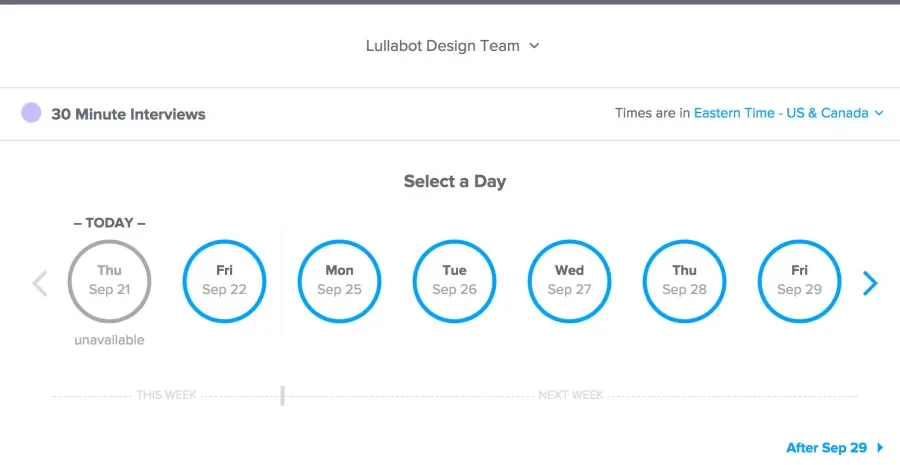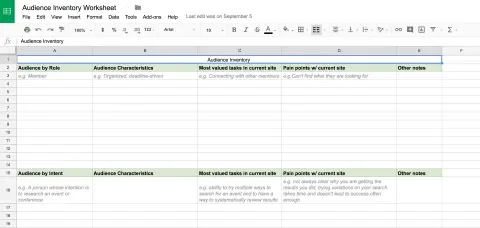We’ve worked with many amazing clients who had to be careful about their budget or needed a project completed rather quickly. You may be one of those clients. If you’re in the process of hiring a design firm to help improve your product or website but are concerned about investing in user research and testing because of budget or timeline constraints, you’re in good company. What follows are some practical ideas your designers can use to increase your chances of success without breaking the bank.
Research to conduct during the project kickoff
“People ignore design that ignores people.” - Frank Chimero, Author of The Shape of Design
Conducting User and Stakeholder Interviews
A clear understanding of the problems you’re solving and who you’re solving them for is critical to the success of any design project. A site’s “users” are made up of not just the end users or target audience of the site, but also the business users: the product stakeholders, content editors, designers, and the team that will use the site over time to reach that audience. Those business users are an ideal starting point for research. The people who create and manage the content, run sales for the organization or handle customer service are often a wealth of information about the target audience they’re serving and their common needs and challenges. These same stakeholders also help clarify the true purpose and goals of the project and any potential pitfalls.
Before any collaborative workshopping, we always try to conduct individual interviews with at least a representative of each of these kinds of stakeholders (e.g., content and editorial, marketing, sales, customer service, leadership, etc.). We’ve found this process to be hugely beneficial for things like:
- Clarifying project goals
- Clarifying the audience and its various segments
- Clarifying the known problem space
- Clarifying the existing, driving assumptions about the site’s users that perhaps need more research
- Surfacing internal conflicts that need resolution
- Surfacing potential pitfalls for the project
This early information you easily get from these interviews can be invaluable as you begin crafting interview protocols, surveys, and other research methods to learn from the site’s audience. Conducting research with a site’s audience (the external user base) is often where the bulk of the cost lies, so getting as much clarity up front to help refine that work can save a lot of time and cost.
Sharing Relevant Documentation
Another highly effective way to reduce research costs in your project is to make sure that your design team can leverage all of the past research your team or others have already done. Designers can learn a great deal very quickly by reviewing the results of past annual surveys or support requests. Below is a list of the kinds of things you should look for and be sure to share with your design team to save time and ensure a better end product.
- Existing internal persona documents that define your audience
- Access to site analytics
- Past surveys of your audience
- Notes, audio or video of any past user tests or interviews
- Existing user flows
- Existing documentation or reports from customer service teams on common problems or guides for those customer service reps
Collecting your team’s knowledge about your audience and summarizing it in an audience inventory worksheet can also help save your designer time when reading through the research.
Competitive Analysis
Conducting a competitive analysis of your competition can also be used to evaluate your audience and make a comparison of how your product or site stacks up against the competition. Designers can usually complete these within a day or two, if not within a few hours. They’ll use a set of heuristics such as design consistency, the grouping of common tasks, functionality, mobile friendliness, and placement of links or calls to action, to help evaluate your site against the competition. This evaluation will help set up a strong design strategy that distinguishes your site.
Research to conduct during the design process
In Process Usability Testing
“To design an easy-to-use interface, pay attention to what users do, not what they say. Self-reported claims are unreliable, as are user speculations about future behavior.” - Jakob Nielsen, User Advocate and principal of the Nielsen Norman Group
Even when you think you understand the problems users have, there are times when your designers will need to ensure that the ideas they’re proposing resonate with your audience. Will they understand how to use a certain component? Does the marketing copy answer their questions? Does the visual design accurately reflect the core values and mission of the company? These are all questions your designers should be asking themselves throughout the design process. Conducting usability tests early and throughout the design process with actual users can help them answer these questions and validate that the design is on the right track.
Usability testing doesn’t have to be a long, expensive process. There are ways your designers can test their ideas with users rather quickly. Tree testing can be a quick way to test your site's IA hierarchy and navigation nomenclature without producing a bunch of artifacts such as wireframes or prototypes that are often needed for usability testing. Your designers can also use wireframes or paper prototypes to conduct efficient usability tests during the exploration phase. At Lullabot, we’ve used a combination of the above to help conduct usability tests in an efficient manner. Conducting usability tests throughout the process with help ensure that the design and strategy are on the right track, and also sets the site up for success.
Research to Conduct After Launch
Your project has launched! Hopefully, everything went smoothly, and now there’s a sigh of relief. But there's still work to be done. The ultimate form of user testing is launching a site! The best designers want to keep on learning and iterating. What follows are a few affordable ways to do this.
Conducting Surveys
Placing an optional survey on the site is an inexpensive way to collect user feedback that doesn’t require a lot of time to set up. Surveying can identify if something is not working correctly on the site and can help quickly collect user feedback to address in possible future iterations. Surveying establishes a user pool for future usability testing. Keeping surveys short (5 brief questions or less) increases the number of users who are likely to complete the survey. Tools like SurveyMonkey, Ethnio, and Typeform can easily integrate into your site.
Another option is to place a link somewhere on the site where users can give feedback. An example of this might be if you're rolling out a restructured navigation. Placing a link titled “can’t find what you’re looking for?” in the navigation that links to a form can help users quickly give feedback on how the new structure is working for them and help to identify any changes that may need to be addressed in the new navigational structure.
Usability Testing
Conducting usability tests on a recently launched site is another way to quickly gather user feedback on how well the site is working for the audience. Since conducting usability sites on the actual launched site requires no prototyping, it can be fairly quick to set up and conduct these tests. You can also save time with recruitment by reusing the same user pool that you had gathered during the in-process usability tests.
Post Launch Meetings
Finally, another inexpensive practice we highly recommend is scheduling regular design check-ins post-launch. Set an interval of either quarterly or biannually to ensure that there's time for real data to come in from real users, but also regular enough to perhaps take action and roll out small improvements based on the data. In these regular meetings, we recommend you do at least the following:
- Review anything that’s gone well, and has been surprising or concerning when it comes to users interacting with the site.
- Review any feedback that your team may collect from actual users
- Review and discuss any changes to the business goals or the goals of the site
- Discuss the progress of the site in relation to the goals that were set. Are they on target?
Adding user research to your project process can be beneficial to everyone involved to help understand your audience’s behavior, their goals, and can help inform how to improve your site after it’s launched. Not every project will have an ample budget or timeline for an in-depth research process, but there are small ways to validate ideas to create a site that’s successful and communicates to your audience. If you’re concerned about how user research can affect the budget, I hope you’ll take some of the above into consideration when discussing user research with your designers and collaborate with them to find small ways to work user research into your process. If you’re interested in learning more, I’d recommend reading Just Enough Research by Erika Hall and The User Experience Team of One: A Research and Design Survival Guide by Leah Buley.



